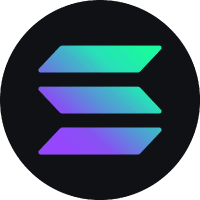
BytomDAO priceBTM
BTM/USD price calculator
Live BytomDAO price today in USD
Do you think the price of BytomDAO will rise or fall today?
BytomDAO market Info
About BytomDAO (BTM)
What Is Bytom?
Bytom is a blockchain-based protocol designed to facilitate the interaction and management of diverse asset types, ranging from digital currencies to real-world assets like equity and bonds. It serves as a bridge connecting the atomic world of tangible assets with the digital realm of cryptocurrencies, leveraging blockchain technology to create a programmable economy. Launched in 2017, this protocol allows for a wide range of operations, including asset registration, exchange, and complex contract-based interactions, thereby enabling a seamless integration of different asset classes.
The Bytom blockchain is governed by the Bytom Foundation, a non-profit organization based in Singapore. This foundation plays a pivotal role in overseeing the technological and application development of the Bytom ecosystem. The Bytom blockchain has evolved over time, with significant milestones, including the release of its whitepapers and the launch of its mainnet, marking its growth and development in the blockchain space.
Resources
Whitepaper: https://github.com/Bytom/wiki/blob/master/en-US/Bytom-Technical-White-Paper-EN.pdf
Official Website: https://bytom.io/
How Does Bytom Work?
Bytom operates on a unique architectural framework designed to optimize asset management and interaction. The protocol initially employed a dual-chain structure: a main chain using Proof of Work (PoW) for asset issuance and a side chain utilizing Proof of Stake (PoS) for transaction efficiency. However, recognizing the economic and operational challenges of this model, Bytom evolved into Bytom 2.0. This new version integrates the main and side chains into a unified platform, enhancing the protocol's efficiency and flexibility. Bytom 2.0 focuses on multi-asset DeFi protocols, improving asset flow efficiency and connecting the digital and atomic worlds more effectively.
One of the key technical advancements in Bytom 2.0 is its consensus mechanism, which transitions from PoW to PoS. This shift not only enhances transaction finality but also significantly increases efficiency, with a block time reduced to just 6 seconds. Bytom 2.0 also pioneers the implementation of World State on a UTXO model, a significant innovation that enhances the programmability of the UTXO model, traditionally used by Bitcoin. This expanded UTXO model allows for recording changes in UTXO status, enabling parallel multi-asset swaps and more complex transactions.
Furthermore, Bytom's contract system is both innovative and scalable. It supports a Turing-complete contract language and is compatible with external contract languages and systems, such as Ethereum. This compatibility reduces the learning curve and migration difficulty for developers, fostering a more inclusive and expansive developer ecosystem.
What Is BTM Token?
BTM is the native cryptocurrency of the Bytom ecosystem. It plays a crucial role in various aspects of the network, including governance, basic services, consensus node elections, and staking. BTM token holders can participate in voting and governance, purchase services, and engage in consensus node elections. The token is also used in staking, trading fee discounts, collateral and lending, and even in mining other public chains through cross-chain cooperation.
Bytom 2.0 introduced significant changes to the economic model of BTM. The total supply of BTM tokens was reduced, and the annual additional issuance was capped to maintain economic balance and security. The token's initial supply was adjusted following the transition from PoW to PoS consensus, reducing the total supply and changing the dynamics of token circulation and staking. BTM has a max supply of 2,100,000,000 tokens.
What Determines Bytom's Price?
The price of Bytom (BTM), like any cryptocurrency, is influenced by a complex interplay of various factors, deeply rooted in the principles of supply and demand within the blockchain and cryptocurrency markets. One of the primary determinants is market sentiment, which is significantly influenced by the overall perception of Bytom's technology, its adoption rate, and the success of its updates and developments. As Bytom continues to evolve, particularly with its transition to Bytom 2.0, which integrates a more efficient consensus mechanism and a unified platform for asset management, investor interest can surge, potentially driving up the price. This interest is often fueled by the project's technological advancements, such as its unique approach to combining the UTXO model with enhanced programmability and its compatibility with other blockchain ecosystems.
Another crucial factor is the broader cryptocurrency market trends. Bytom's price is not isolated but is often correlated with the movements of major cryptocurrencies like Bitcoin and Ethereum. Market trends, regulatory news, and global economic factors can have a ripple effect, influencing the price of BTM. For instance, a bullish trend in the broader market can lead to increased investor interest in altcoins like BTM, while regulatory crackdowns in key markets can have the opposite effect. Additionally, the specific updates and changes in Bytom's protocol, such as adjustments to its tokenomics under Bytom 2.0, including the total supply reduction and changes in token issuance, directly impact its scarcity and perceived value, thereby influencing its market price.
Lastly, the utility of the BTM token within the Bytom ecosystem plays a significant role in determining its value. As the native token, BTM is used for various functions like governance, transaction fees, staking, and participating in consensus node elections. The more extensive the use-cases and the higher the demand for these functions, the greater the potential value of the BTM token. This utility is often a reflection of the health and activity of the Bytom ecosystem – a vibrant, growing ecosystem can lead to increased demand for BTM, positively impacting its price. Therefore, the continuous development of Bytom's platform, its adoption by users and developers, and its ability to maintain a secure and efficient blockchain environment are key to its value proposition in the competitive cryptocurrency market.
AI analysis report on BytomDAO
BytomDAO Price history (USD)
 Lowest price
Lowest price Highest price
Highest price 
What is the highest price of BytomDAO?
What is the lowest price of BytomDAO?
BytomDAO price prediction
When is a good time to buy BTM? Should I buy or sell BTM now?
What will the price of BTM be in 2026?
What will the price of BTM be in 2031?
Hot promotions
Global BytomDAO prices
How to buy BytomDAO(BTM)

Create Your Free Bitget Account

Verify Your Account

Convert BTM to USD
FAQ
What is the current price of BytomDAO?
What is the 24 hour trading volume of BytomDAO?
What is the all-time high of BytomDAO?
Can I buy BytomDAO on Bitget?
Can I get a steady income from investing in BytomDAO?
Where can I buy BytomDAO with the lowest fee?
Related cryptocurrency prices
Where can I buy BytomDAO (BTM)?
Video section — quick verification, quick trading

BTM/USD price calculator
BTM resources
Tags:
Bitget Insights





Trade
Earn
BTC/USDT
SpotBTC/USDT
MarginBTC/USDT
USDT-M FuturesBTC/USD
Coin-M FuturesPrices of newly listed coins on Bitget








